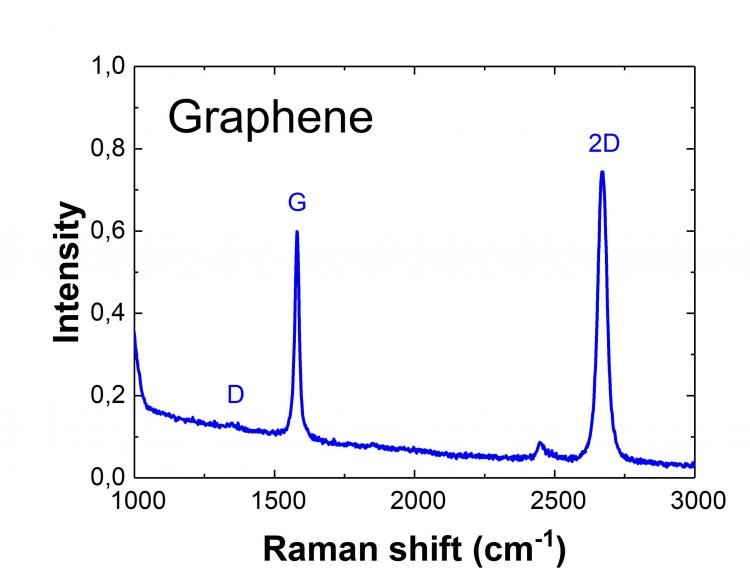Graphene Raman Spectrum
Graphene is a building block of all graphitic carbon allotropes. It is a monatomic sheet formed by a network of sp2 carbons organized in a honeycomb structure. This sheet can be rolled into seamless one-dimensional nanotubes or, for example, stacked into three-dimensional graphite. Graphene can be obtained by exfoliation of graphite – a commonplace natural material. Thus, it is cost-effective as a raw material. What is more, graphene has been attracting significant interest because of its potential in-plane mechanical, electrical, and thermal properties. In this regard, graphene is considered one of the most exciting materials for polymer nanocomposites.
Contact us to get access to Raman Spectra Database more than 20 000 chemical and biological substances
Raman spectroscopy of Graphene
Graphene Raman spectroscopy is a key technique in analyzing various types of sp2 nanostructures and the effect of disorder in these structures. D and G' Raman bands exhibit dispersion behavior, i.e., they shift to the higher frequencies with increasing laser excitation energy. This behavior is used to analyze the interfacial properties of the surrounding polymer and the carbon structures in the composites. Therefore, owing to its sensitivity to structural changes in carbons, Raman spectroscopy is an important method of characterizing various carbon allotropes and their disordered types.
Raman Spectra Library
Raman spectroscopy can uniquely identify many chemical and biological agents.
All substances


